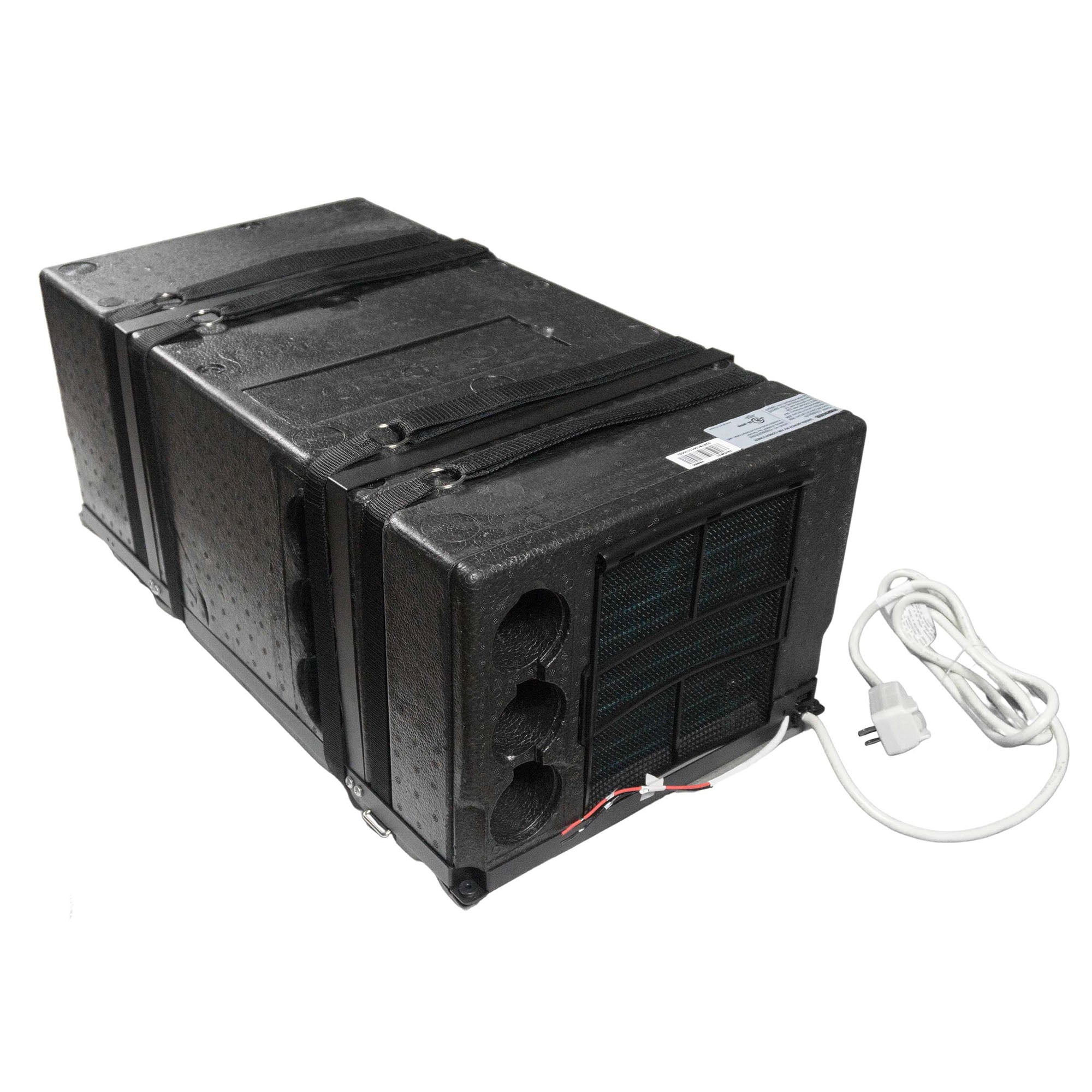When I was planning our build I wanted to avoid things on the roof that would kill MPG and have a very quiet HVAC system that would be able to run on batteries. I had experience with a Dometic Cool Cat and was looking for a modern replacement.

 www.pioneerminisplit.com
www.pioneerminisplit.com
This is basically a window air conditioner with a reversing valve in a foam box. My initial impression is that the unit is very quiet, you can’t hear the compressor, and it moves a lot of air. I’m going to set it up outside next week with some duct work into the garage and get an idea of how much heat I can get out of it. I know that it takes about 6,000 btu to heat the garage when it’s around freezing outside so this will give me some idea of it’s real world output.
The only challenge in mounting it in the van is going to be the fact that ours has a spare tire and I was planning on using all of the space in front of the axle for holding tanks so when it gets a little warmer I’ll be doing a lot of measuring under the van to see where it will end up being mounted. Worst case I’ll just have to make one of the tanks a foot shorter to have a clear area for intake and exhaust.
Running it briefly in 20 degree air it was pulling about 700w and putting out noticeably warmer air than it was pulling in. That gives me hope that even when it’s cold if we start with the van warm from the PM’s heater it will be able to maintain overnight with some help from the 350w of electric heat in the floor.
![Image]()
![Image]()

Pioneer® 10,000 BTU Under-Bench RV Inverter Heat Pump Air Conditioner
Stay comfortable on the road with Pioneer’s under-bench RV heat pump AC. Ultra-quiet, compact, & efficient, it cools/heats all year with easy ductable setup!
This is basically a window air conditioner with a reversing valve in a foam box. My initial impression is that the unit is very quiet, you can’t hear the compressor, and it moves a lot of air. I’m going to set it up outside next week with some duct work into the garage and get an idea of how much heat I can get out of it. I know that it takes about 6,000 btu to heat the garage when it’s around freezing outside so this will give me some idea of it’s real world output.
The only challenge in mounting it in the van is going to be the fact that ours has a spare tire and I was planning on using all of the space in front of the axle for holding tanks so when it gets a little warmer I’ll be doing a lot of measuring under the van to see where it will end up being mounted. Worst case I’ll just have to make one of the tanks a foot shorter to have a clear area for intake and exhaust.
Running it briefly in 20 degree air it was pulling about 700w and putting out noticeably warmer air than it was pulling in. That gives me hope that even when it’s cold if we start with the van warm from the PM’s heater it will be able to maintain overnight with some help from the 350w of electric heat in the floor.







